The Thirty Years War (1618-1648) - Golden age
Traitors were thrown out of the window
The Thirty Years War Started With An Attack: Protestant nobles threw three catholic dignitaries from the castle window in Prague. That was the start of a war that led almost all European countries into a spiral of violence.
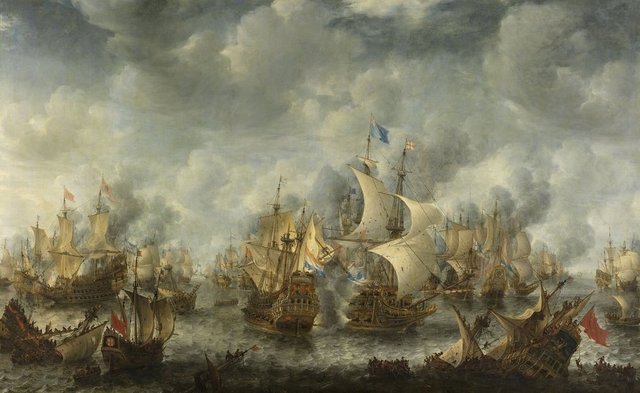
Out of the window
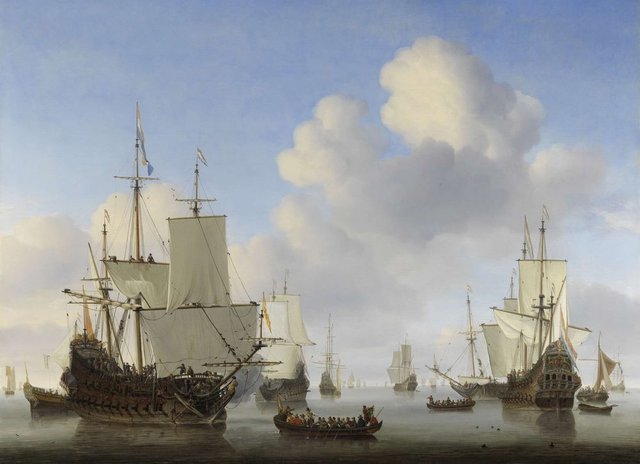
Four high regents were consulted on May 23, 1618 in a room at the Prague Castle, when the door opened and a group of angry men stepped in. The four government officials, employed by Emperor Matthias II, were working and threatened against the wall. Two of them could escape; the other two were thrown out of the window with excitement. Their secretary underwent the same fate. Surprisingly, all three men survived the fall of seventeen meters. According to the Catholic version of the events, the Virgin Mary broke their taste with her mantle. The protestant statement was that the three Catholic regents had come to a mountain garbage. More likely, the velocity of their fall was slowed down by sliding the wall under the window.
Either way, the three high-quality officers could escape the city. Secretary Fabritius drove to Vienna to warn the emperor and was rewarded for it as a noble title. He was officially called 'von Hohenfall'.
"The goal of the attackers was achieved"
That the three men escaped were unfortunate, but the goal of the attackers was achieved. The Hussite (Protestant) nobles wanted to provoke the Emperor with their deeds. Two centuries earlier, in 1419, seven members of the Prague City Council were thrown out of the city hall window, an event known as the First Prague Defenestration - 'defenestreren' literally means throwing out the window. Then there were angry adherents of radical ministers who wanted the corrupt Catholic regents to leave. That was an expression of the growing dissatisfaction about social inequality.
Second Prague Defenstration
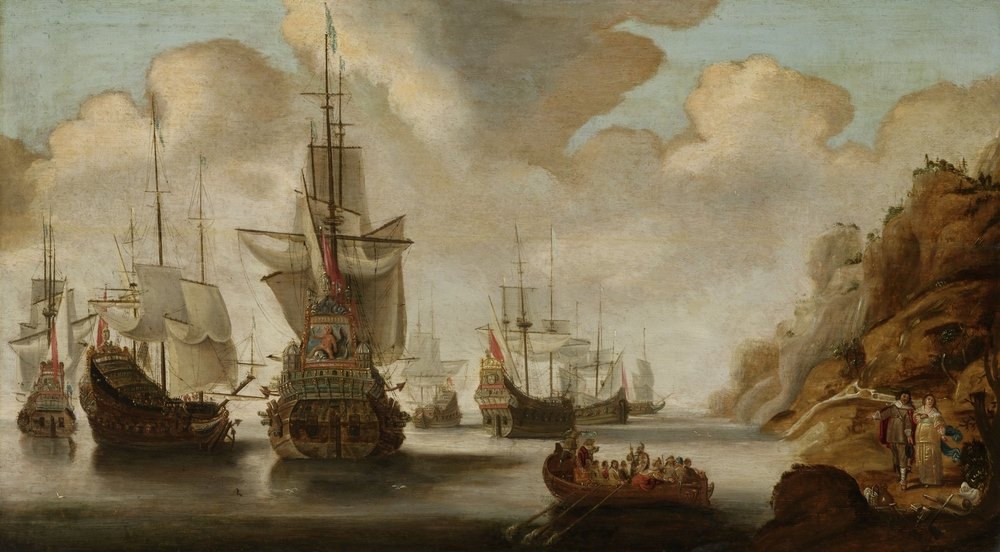
Now the Protestant nobles turned against the representatives of the Catholic Emperor. Service cousin Ferdinand tried to limit the rights of the Protestants as king of Bohemia. The message sent by the founders of the Second Prague Defense Station was clear: anyone who violated the rights of the three states - nobility, citizens and peasants - including the right to religious freedom, could break the window.
"As a stave stick, the conflict was passed on to other players and areas around the Holy Roman Empire"
The Second Prague Defenestration was the Bohemian Revolt and, therefore, the Thirty Years' War (1618-1648), a battle that eventually became almost all of Europe involved. Latent present religious, economic and political tensions could result in this. As a stave stick, the conflict was passed on to other players and territories around the Holy Roman empire, which included the present Germany, Austria, the Czech Republic, West Poland, Luxembourg and part of France.
Terrible
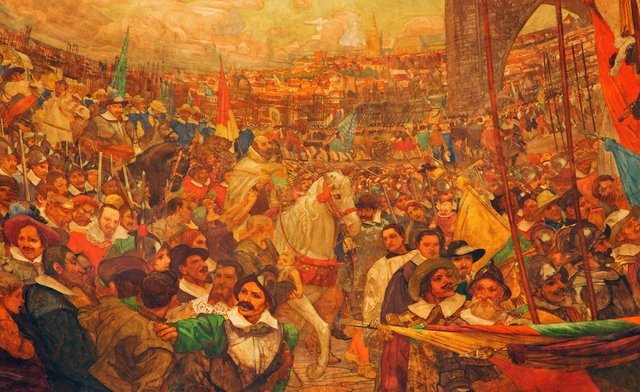
The war was bloody and terrible; According to careful estimates, a quarter of the inhabitants of the empire came to life. Other estimates speak of a third or even 40 percent of the population. Legio are the stories about cannibalism in siege cities and crimes committed by robbery soldiers. Resilient farmers were cut off their noses and ears, or they were poured with boiling water. Cities and villages formed the scene for apocalyptic scenes; due to the fact that there was no room for new graves, half-dead bodies were stacked on the street corners. Diaries and chronicles have yielded these anecdotes, but authors of propaganda pamphlets were keen on the atrocities.
"The war was bloody and terrible; According to careful estimates, a quarter of the inhabitants of the Holy Roman Empire came alive"
Thirty-year war in the Netherlands
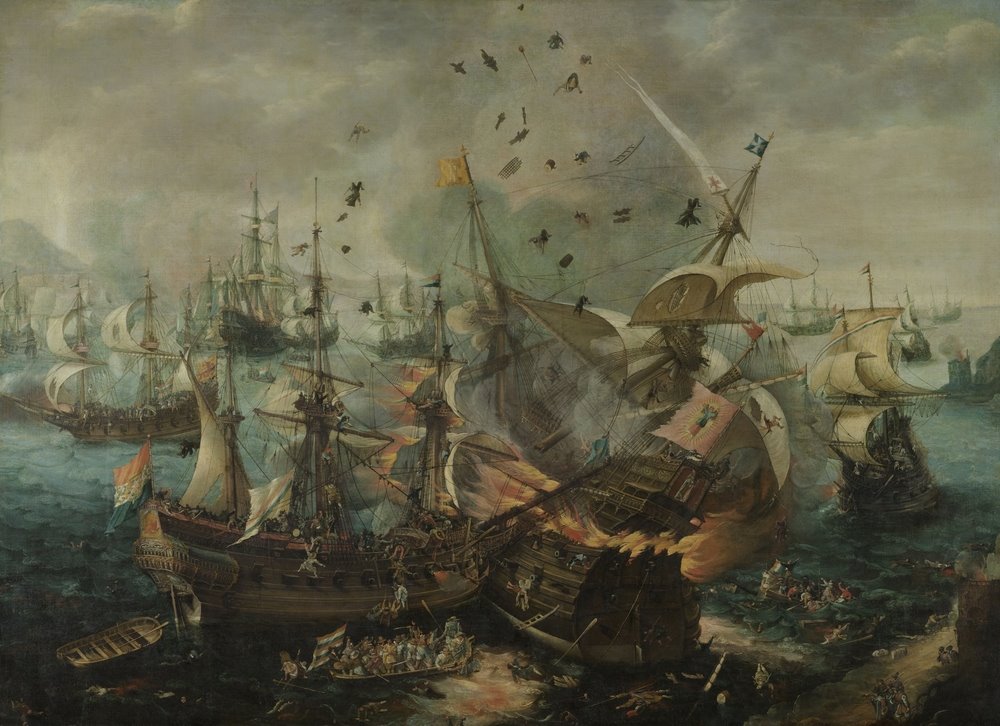
The terrifying aspects of the Thirty Years' War are well known in the Netherlands. But the war is all but a big part in collective memory, unlike the eighties war (1568-1648). Strange is not that. The eighty-eight war was "our" struggle for independence against Spain and thus speaks much more to the imagination than a struggle that played mainly in Central Europe.
"Resilient farmers were mutilated or poured with boiling water"
Nevertheless, the small attention to the Thirty Years War in the Netherlands is unjustified. The struggle had a huge and lasting impact on international relations in Europe. In addition, the Thirty Years War was linked to the eighties, and not only because the last thirty years overlap. The unknownity of the Thirty Years War may be due to its complexity. The power relations in the Holy Roman Empire were complicated. The empire was a political connection of loose duchies, princes, free cities, dioceses and counties, some of which did not fall under the direct power of the Habsburg Emperor.
Switch from side
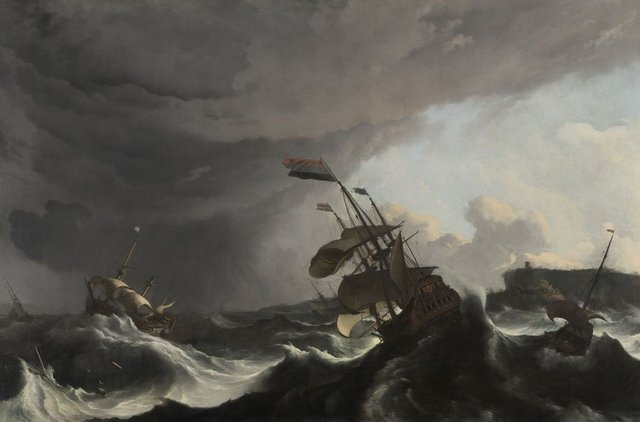
During the Thirty Years, local rulers changed regularly as they led themselves through religious motives and then through political, dynastic or economic considerations. Meanwhile, foreign powers also involved. In short, there were two major conflicts: the religious issue - the struggle of power between Catholics and Protestants - and the pursuit of sovereignty through the Habsburg dynasty.
Both battle points formed the background of the Defenestration. The rebellious nobles in Prague not only oppose the efforts of the Habsburg Emperor to restore the Catholic religion, but also to the fact that he sought absolute power. Habsburg's ideal was a universal monarchy: a world-wide empire under the leadership of a God-chosen dynasty. The Spanish areas - including the Netherlands - belonged to this empire. They were led by another branch of the Habsburg dynasty since the throne of Charles V in 1555.
"In short, there were two major conflicts: the religious issue and the pursuit of sovereignty through the Habsburg dynasty"
The Habsburg princes became increasingly convinced that only Catholic religion could serve as a basis for that universal monarchy. The Catholic faith and the dynastic interests were intertwined. That stumbled against the breast of the graves, prince and archbishops who used to dominate their own area. In addition, since the Peace of Augsburg (1555), they were allowed to determine which religion was called in their domain, a right to which they were very important. In Bohemia, most of the ruling elite was protestant.
About the same conflict had been played between the Spanish branch of the Habsburg dynasty and the Netherlands: the Dutch uprising also reversed the absolutist tendencies of the Habsburg central authority and their struggle against protestantism. The rebellious regions saw the attempts at centralization and the Habsburg's antiquarian legislation as a violation of their ancient rights.
Following events
The similarities between the events in the Holy Roman empire and their own history did not escape many inhabitants of the Republic. Protestants in the empire were seen as soul relatives. The events were monitored through a constant flow of pamphlets, prints and newspapers. Immediately after the Defenestration in Prague, the curious residents of the Republic could read in a pamphlet about the spectacular events. The pamphlet contained two letters to the states-general of Jacques Hoefnagel, a cousin of Constantijn Huygens, who was in Prague during the incident.
According to Hoefnagel, the evil nobles only wanted to know who brought them to the emperor in an evil daylight. Two of the four dignitaries blamed: Vilem Slatava and Jaroslav Borita von Martinitz. They were then thrown out of the window, including 'rapier and mantle'. That was, according to Hoefnagel, nothing more than reasonable. In the country's articles of association, it was written that everyone who betrayed the fatherland had to be thrown out of the window.
"It was now for the emperor not to let go of the boulder"
According to Hoefnagel, the launcher, Count Thurn, was sent by an angel. Thurn did not want to unleash violent insurgency, but gave a warning to the Emperor. It was now for the emperor not to let go of the boulder.
Warning
Hoefnagel was right in one sense: the Defenestration was indeed meant to be a warning. The day before, nobles and citizens gathered in the house of the powerful nobleman Albrecht Jan Smirický. There the emotions rose high. Count Thurns held a passionate argument in which he suggested that the Catholic representatives of the emperor with secret tricks sought to undermine the unity of the empire. According to Thurn, the Catholic governors were even about to arrest them. It's time to throw them out of the window, "as usual," Thurn would have said.
It has been breeding for years between the Habsburgs and Bohemian states. Emperor Rudolf II went wrong. Rudolf was a clever man obsessed with art, alchemy and astrology. With the daily reality he did not like to work anymore. From 1600 he mentally resigned. Months apart he ended up, and suffered from extreme mood swings.
"In 1609, angry Protestant nobles robbed a letter in which the Bohemian Protestants received great religious and political freedoms"
Through his awkward attempts to revive Catholicism, the contradictions between the Protestant part of the population and the Catholic imperial government grew. In 1609, angry Protestant nobles robbed a letter in which the Bohemian Protestants received great religious and political freedoms. After the death of Rudolf in 1612, the new Emperor Matthias immediately returned a number of concessions. The protesters were furious. What further contradictions made was the extensive celebration of Protestants in 1617 of the 100th Anniversary of Luther's Suspensions Suspension in 1517. Catholic publicists wrote poisonous pamphlets about these provocations.
Contradictions
The contradictions were getting bigger, and the protruding protestant elite suned on measures. Eventually, they decided to proceed to the defensive trials of the highest representatives of the emperor in Bohemia from pure despair. After the Defenestration, the conspirators quickly installed their own government. At first, they did not try to make it too openly open. Like the early insurgents in the Netherlands, they said they had provided for the corrupt government, not on the frost.
"Now all German princes had to choose one side"
When Emperor Matthias died in 1619 and his crowned cousin was crowned Emperor Ferdinand II, he decided to appoint the Calvinist Frederik V of the Palatinate to King of Bohemia. Now all German princes had to choose one side, and the war really started. These events were also closely monitored in the Republic. Pamphlets describing the splendor of the inauguration ceremony were in the bookstores at the Binnenhof. Frederik's wife had entered Prague in an unspeakably expensive car, was in the reports to read. During the dinner after the ceremony, white and red wine flowed out of special fountains and sprinkled gold and silver coins over Frederik.
Support from the Republic
The States General, headed by the strictly calvinist party of Maurits van Nassau, supported Frederik and the anti-Habsburg party, both military and financially. Despite this support, the Bohemian insurgents were destroyed at the Battle of the White Mountain (1620). Frederik fled to the Republic, where he got the nickname 'Winterkoning' because he had sat on the throne for a season. In The Hague he started an extensive lobby and set up an international resistance coalition against the Habsburgers on paws.
"Maurits wanted to resume the war with Spain"
The fact that the Republic chose so openly against the Habsburgers was not a coincidence. Around this time, the Twelve-Years File Completed with Spain (1609-1621). Maurits wanted to resume the war with Spain. He pointed out that the Great Protestant War had finally broke out with the Defenestration and the Bohemian Revolt. The Habsburg Catholic yoke could now be thrown away, Maurits said. The impression that a large-scale religious war took place was further strengthened when Lutheran Sweden and Denmark were involved in the conflict.
Augsburg Peace
Contemporaries saw the conflict clearly as a religious struggle. To a certain extent, that was also the case. The Augsburg Peace of 1548 could not conceal that two religions existed in the Holy Roman Empire, both of which were convinced that they had the truth in their own minds and that they were the only true road to soul sickness. The differences were increasingly emphasized by the radical parties on both sides, the Jesuits and the Calvinists.
"The price for peace was high: Europe was destroyed by war, disease and famine"
But there was more than just a conflict about religion. The long and exhausting war with the Ottoman Empire (1593-1606) cost the Habsburg dynasty a lot of money and political authority. The damage was further enhanced by the continuous battle between the various branches of the dynasty. On the eve of the Thirty Years the Habsburg's financial and political bankruptcy. As a result, the radical groups dared to confront the confrontation. Also the nobles responsible for the Defenestration had not only religious motives. Count Thurn, one of the leaders of the rebellious nobles, was taken out of office as a lock keeper of Karlstadt a year earlier. He was replaced by Martinitz, not by accident the first Catholic regent thrown out the window.
Political struggle
Pragmatic and political interests also played a more important role than religious in the continuation of the struggle. The Catholic France concluded a treaty with the Protestant Republic in 1635 to cross their own arch enemy Spain. The French Cardinal Richelieu received a lot of criticism for his religious "treason".
"The French Cardinal Richelieu received much criticism in his own country"
For the Habsburgers, the battle in Bohemia was also political. Bohemia were at the heart of the universal monarchy they sought. That ideal threatened to defeat the Defenestration. That's why they are doing everything about getting back to Bohemia, and later the other areas that are opposed to them. They called for help from Spanish Habsburgers.
Peace of Westphalia
The interference of Spain in the Thirty Years War had far-reaching consequences for the Republic. In the final phase of the war with Spain, the Republic could make a lot of victory in the Southern Netherlands, because the Habsburgers had the pressure to fight the Swedish-French coalition on the other front since 1643. Finally, they became so exhausted that they had to give up their dream of a universal monarchy. For the tormented Holy Roman Empire, but also for the Republic, it meant: peace.
"Peace is the victory of diplomacy and the birth of the international system of sovereign states, as we know"
The Westfalen Peace, eventually concluded after endless diplomatic negotiations, consisted of the Münster Treaty between Spain and the Republic, and from the Osnabrück and Münster treaties between the Holy Roman Empire and Sweden and France, respectively. Peace is the victory of diplomacy and the birth of the international system of sovereign states, as we know. However, according to many, the price paid was too high to be able to speak of a positive outcome. What began to shed three men out of the window ended with a Europe devastated by war, disease and famine.
Sources:
Link 1
Link 2
Link 3
Link 4
Link 5
Thanks for your time
Related Posts,
https://steemit.com/history/@braini/everything-you-need-to-know-about-world-war-i
https://steemit.com/military/@braini/impressive-pictures-of-military-actions-and-equipment
https://steemit.com/planes/@braini/top-10-wwii-s-best-fighter-planes

This post recieved an upvote from minnowpond. If you would like to recieve upvotes from minnowpond on all your posts, simply FOLLOW @minnowpond
@braini, thank you for supporting @steemitboard as a witness.
You can click on your award to jump to your Board of Honor
Once again, thanks for your support!
@braini Thanks for sharing :-)I am following
|
Best of Luck !.
Congratulations! This post has been upvoted from the communal account, @minnowsupport, by braini from the Minnow Support Project. It's a witness project run by aggroed, ausbitbank, teamsteem, theprophet0, someguy123, neoxian, followbtcnews/crimsonclad, and netuoso. The goal is to help Steemit grow by supporting Minnows and creating a social network. Please find us in the Peace, Abundance, and Liberty Network (PALnet) Discord Channel. It's a completely public and open space to all members of the Steemit community who voluntarily choose to be there.